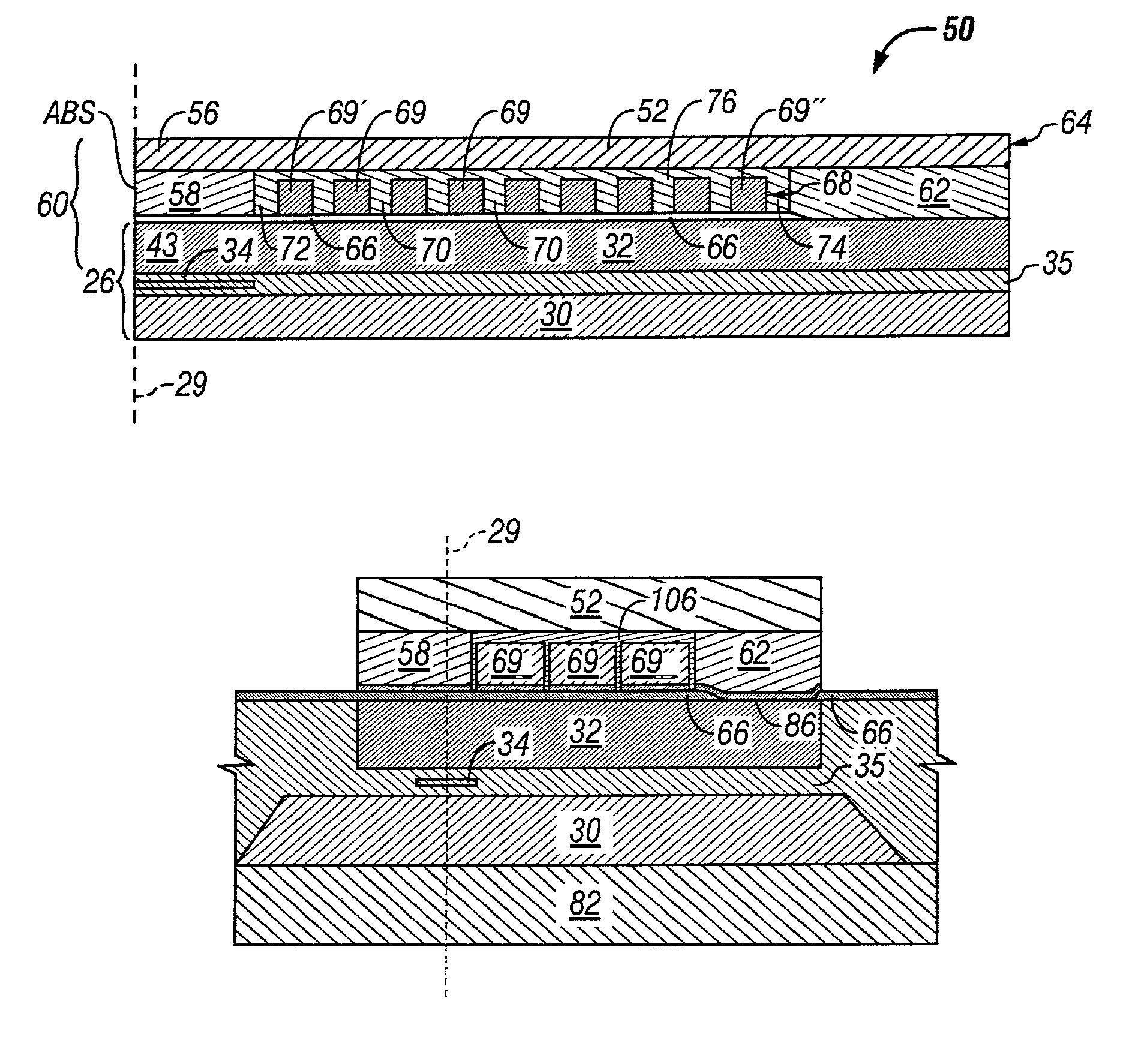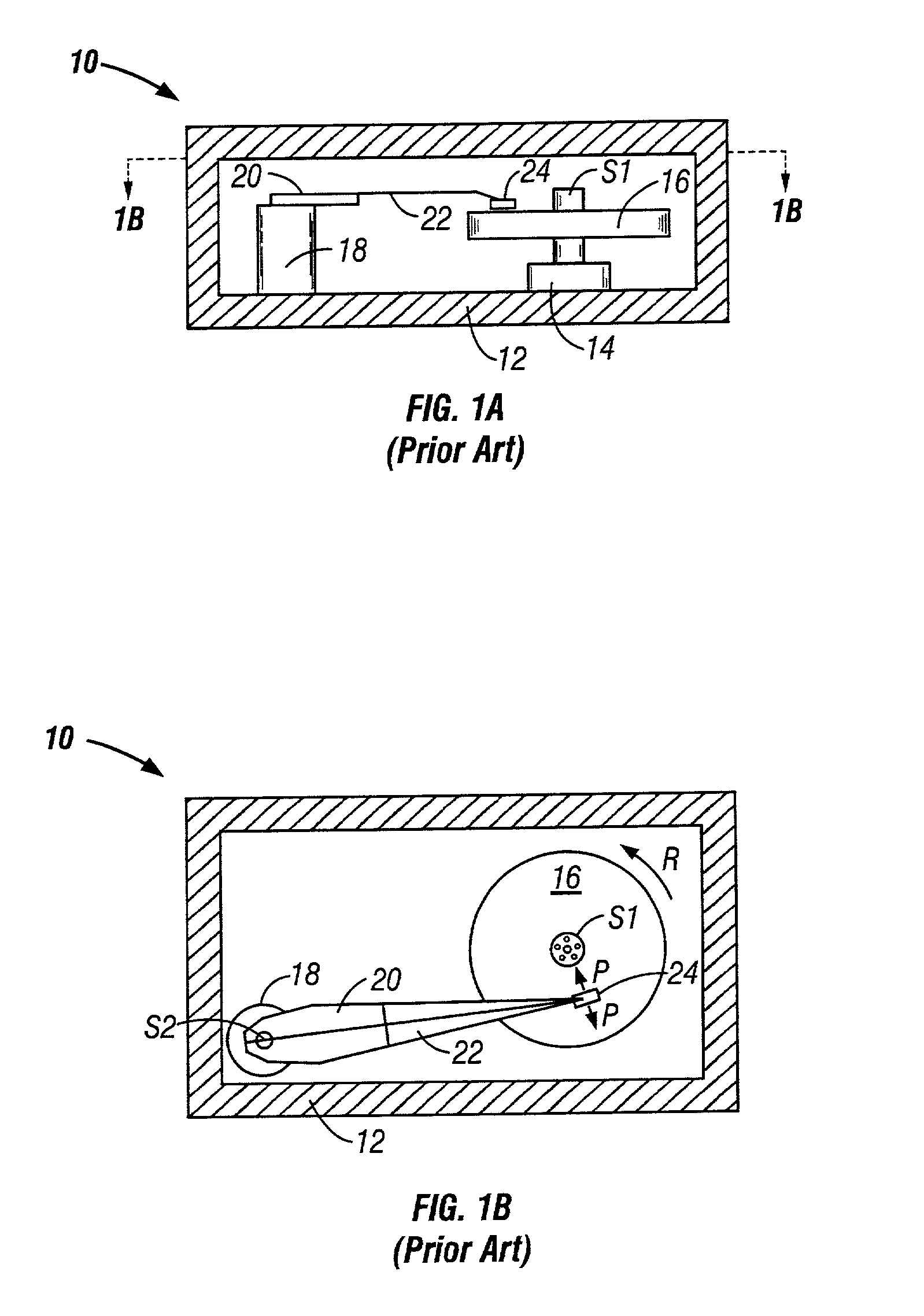Compact MR write structure
a write structure and compact technology, applied in the field of magnetic data storage systems, can solve the problems of increasing the flux rise time, hindering the write performance, and extra length, and achieve the effect of less space and less spa
- Summary
- Abstract
- Description
- Claims
- Application Information
AI Technical Summary
Benefits of technology
Problems solved by technology
Method used
Image
Examples
Embodiment Construction
[0045]FIGS. 1A, 1B, 2A, 2B, 3A–3C, and 4 were discussed with reference to the prior art.
[0046]FIG. 5 is a cross-sectional view of a read / write head 50 according to an embodiment of the present invention, including a read element 26 and a write element 60. Edges of the read element 26 and write element 28 also define an air bearing surface ABS, in a plane 29, which can be aligned to face the surface of the magnetic disk 16. The read element 26 includes a first shield 30, a conductive shield layer 32, which functions as a second shield, and a read sensor 34 that is located within a dielectric medium 35 between the first shield 30 and the conductive shield layer 32. Embodiments of the present invention may include a read sensor 34 that may be any type magnetoresistive sensor to detect magnetic field signals from a magnetic disk 16.
[0047]The write element 60 includes conductive shield layer 32, which functions as a first pole, and a second pole 52. The conductive shield layer 32 include...
PUM
 Login to View More
Login to View More Abstract
Description
Claims
Application Information
 Login to View More
Login to View More - R&D
- Intellectual Property
- Life Sciences
- Materials
- Tech Scout
- Unparalleled Data Quality
- Higher Quality Content
- 60% Fewer Hallucinations
Browse by: Latest US Patents, China's latest patents, Technical Efficacy Thesaurus, Application Domain, Technology Topic, Popular Technical Reports.
© 2025 PatSnap. All rights reserved.Legal|Privacy policy|Modern Slavery Act Transparency Statement|Sitemap|About US| Contact US: help@patsnap.com



